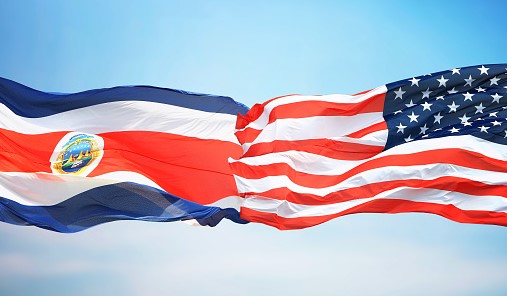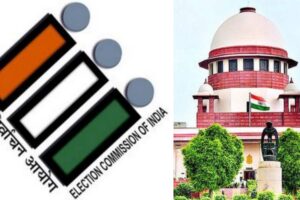
Costa Rica and the U.S. government have reached an agreement to potentially provide legal options for Nicaraguan and Venezuelan migrants who are currently among the 240,000 asylum seekers waiting for asylum in Costa Rica.
The announcement of this agreement was made by Costa Rica on Tuesday and by the United States on Monday, with the intention of relieving the strain on Costa Rica’s overwhelmed asylum system and preventing asylum seekers from abandoning the slow process in Costa Rica and attempting to reach the U.S. border.
In recent years, Costa Rica, with its population of 5 million, has become a major destination for asylum requests. For many migrants, seeking asylum was a means to legalize their status and gain authorization to work. However, the increasing number of applications, particularly from migrants escaping Nicaragua, has resulted in a significant backlog. Last year, Nicaraguans accounted for 90% of all asylum applicants.
On Tuesday, Public Security Minister Mario Zamora did not disclose the exact number of the 240,000 individuals awaiting asylum who would be eligible to apply for one of the U.S. pathways. He, along with Costa Rica’s migration director Marta Vinda, emphasized that only Nicaraguans and Venezuelans with pending asylum applications would be considered for these options.
Neither the U.S. nor Costa Rican governments have provided specific information regarding the nature of the legal pathways that will be opened. According to Costa Rican Public Security Minister Mario Zamora, the United Nations immigration and refugee agencies will compile a list of eligible individuals, and those who applied for asylum after June 12 will not be eligible. It is estimated that approximately 1,000 cases will be processed each month.
The U.S. State Department, in a statement released on Monday, mentioned that the six-month pilot program could facilitate the processing of refugees, as well as provide other humanitarian and labor options for individuals interested in entering the United States.
The statement said, “In the first two months of the exploratory phase, only eligible individuals will be contacted to schedule a screening appointment at a Movilidad Segura office in Costa Rica to assess whether they are a qualified candidate for lawful pathways to the United States or other countries”. After the first two months, eligible migrants will need to make an appointment through the MovilidadSegura.org website.
When asked about the agreement between Costa Rica and the U.S., Aaron Reichlin-Melnick, the policy director at the American Immigration Council, speculated, “I suspect that it’s an effort to convince Nicaraguans and Venezuelans in the country to stay there temporarily, keeping numbers down in the short term as they get other things in place at the border” that it might be an attempt to persuade Nicaraguans and Venezuelans in Costa Rica to stay temporarily and thereby reduce the numbers at the border in the short term, while other measures are put in place. “But who knows how it’ll really work in practice.”
In 2012, Costa Rica received a modest 900 asylum applications. However, in 2018, that number surged to nearly 28,000, and last year, between January and September alone, the country received over 67,000 applications.
Costa Rican President Rodrigo Chaves expressed concerns in December about the abuse of the asylum system by economic migrants and announced plans to tighten the country’s generous policies. As an alternative, Costa Rica offered a two-year work permit to Nicaraguans, Venezuelans, and Cubans in exchange for withdrawing their asylum cases.
The U.S. government has been actively seeking ways to manage the influx of migrants heading towards its southern border. It has been increasingly seeking cooperation from governments located farther south along the migratory route.
Recently, a website was launched that allows Guatemalans, Hondurans, Salvadorans, and Nicaraguans residing in their home countries to apply for appointments through an online platform. These appointments assess their eligibility for various legal pathways offered by the United States.
Nicaraguans and Venezuelans have become significant sources of migration to the U.S. during President Biden’s administration. In January, the U.S. began offering parole to a monthly quota of up to 30,000 Cubans, Haitians, Nicaraguans, and Venezuelans who apply online with a financial sponsor and arrive by air.




